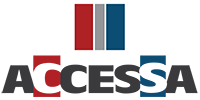This is the first in a series of articles about budgeting for and purchasing pretreatment wash systems. Connect with HIT Solutions on LinkedIn, Facebook or Twitter so you don’t miss a post.
No one ever wants to hear, “You have to go back and start over.” Unfortunately, frustrated owners, production line managers and quality directors often describe to us finishing problems that link back to their surface pretreatment process.
Your surface pretreatment process impacts your company’s bottom line in so many ways, which is why you and your coatings partners need to fully understand the details of your process and calculate its value from a business perspective.
Whether you have a standalone basket immersion washer, or a complex five-step deburring, aqueous tumbling, rinsing, drying and paint-coating machine, the costs associated can have a major effect—positive or negative—on your productivity, your profit margin and the quality of your finished goods.
Understanding the costs
Cleaning expenses usually hover around 10 percent, but can account for as much as 30 percent of your operating expenses. When calculating your estimated costs, factor in:
- Time
- Labor
- Cost of the cleaning equipment
- Cleaning chemicals
- Disposing of the waste
This bite out of your budget pays off in the long run, as the price you would pay for producing poor-quality products is lofty. A successful pretreatment process gives you a clean surface for better adhesion for coatings, enhanced rust and corrosion resistance, and longer-lasting higher-quality products. Ultimately, spending more upfront on the pretreatment process helps you sustain costs—fewer rejects—while preserving customer satisfaction and loyalty.
Selecting the right system
Once you understand how important a pretreatment system is to your company’s bottom line, proceed with the selection of your system. Ask yourself:
- Does my current or proposed wash system match the soil types anticipated?
- Does it make sense considering my parts configuration, finish and corrosion specification requirements?
- Does it align with my budget?
Go beyond the spec sheet and factor in the cost of operation, the number of stages needed to meet specifications; renewal, waste and maintenance costs; and ease of use. Talk to people who understand parts and details of your process so they can help you uncover pitfalls and potential issues that might affect your decision. HIT Solutions is always here to help you consider your options and make recommendations.
Remember: This process directly affects the quality of the end product. Though your system must fit within budget constraints, now is not the place or time to be penny-wise and pound-foolish.
When you are evaluating which pretreatment wash systems and solvents are best for you, consider more than budget and floor space. The following factors should also be key factors:
- Parts mass and size
- Substrate
- Type of soil
- Amount of soil
- Length of time the soil has been on the part
- Compatibility with the process
- Job specifications
- Finishing process
- Worker safety
- Environmental concerns
- Transfer times
- Refresh schedules
Stages of pretreatment
There are two methods of wash applications to consider: spray and immersion. With each method, the wash process has various stages and goes up to about six steps. The complexity depends on your substrate, parts, solvents and soil removal.
Stage 1: Cleaning—Removes all soils and prevents their redisposition on the clean surface
Stage 2: Rinse—Removes residual cleaner and keeps parts from drying
Stage 3*: Phosphate Coating—Converts metal to a phosphate coating
Stage 4: Rinse—Removes residual phosphate solution and keeps parts from drying
Stage 5: Sealant—Imparts additional corrosion protection by sealing the phosphate coating
Stage 6: Rinse—Removes residual sealant
Once the pretreatment process is complete, your product may need to proceed to a dry-off oven or a cool-down area. From there, it’s ready for the next step, be it preparation for assembly, inspection, surface treatment, or packaging and distribution.
Evaluate often and adjust when necessary
Selection is only the beginning. At HIT Solutions, we suggest that you continually review your cleaning process to make sure the procedures are working well and are void of any cleaning issues or irregularities. Line production changes, parts transport and storage alterations, environmental changes, and material usage differences can wreak havoc on your pretreatment wash results.
For example, environmentally friendly waterborne paints are becoming more adaptable to industrial uses. However, they prove much less forgiving when it comes to parts that have not been thoroughly cleaned and pretreated.
Parts requiring high corrosion protection, such as exterior automobile parts, appliances and office furniture, often require multiple washer stages, especially if the production scheduling enables an opportunity for flash rust to occur.
Rely on an outside perspective
Do not hesitate to ask your supplier to participate in your selection and to provide periodic audits of your system and processes. Even if you have the expertise in house, this may not be a DIY project. The balance of a pretreatment wash system is an intricate piece of your business. Expand your resources by partnering with a skilled, knowledgeable supplier capable of providing assistance, expertise, suggestions and troubleshooting of your overall process.
Quality is either an asset or cost to your business. Keep it clean to make it an asset.
*Zinc Phosphate Systems requires a conditioning stage prior to phosphate stage. Conditioning aids in the uniformity of the phosphate coating.
